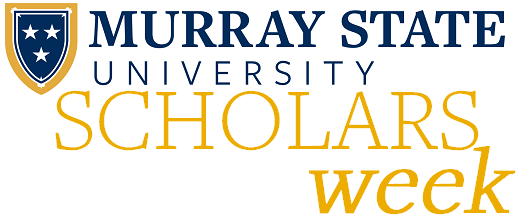
Honors Theses: Agriculture
| 2016 | ||
| Thursday, April 21st | ||
| 1:00 PM |
Intrauterine Artificial Insemination in Show Stock Swine Sarah D. Traylor, Murray State University Barkley Room, Curris Center 1:00 PM - 2:00 PM During the 2015-2016 calendar year, I will be studying the comparisons and contrasts of traditional cervical exposure artificial insemination techniques versus a new method of transcervical (intrauterine) insemination that extends a separate catheter through the cervix and into the uterus. The study will measure conception rates, litter size, and cost efficiency as major factors to consider with each method and the way commercial producers can use this information to produce the largest litter possible while keeping both the sow and piglets safe and healthy. Sows at Murray State University’s North Farm will be randomly selected for technique so that no bias can be given based on previous conception pattern. The bulk of the project will be conducted during fall semester, 2015, including literature review and actual artificial insemination of sows at Murray State University’s North Farm. The project will carry over into the early spring of 2016 as the litters bred for in the fall are born and final results are collected and put together. |
|
|---|---|---|
| 1:00 PM |
Soil Infiltration Rates in Six Agricultural Fields of Western Kentucky Landon M. Gibbs, Murray State University Barkley Room, Curris Center 1:00 PM - 2:00 PM The evaluation of infiltration rates is vital for calculation of surface runoff in order to reduce the risk of pollutants in the environment and to proficiently apply water and fertilizers for a crop’s benefit. The objectives of this study were (1) to assess the impacts of six agroecosystems on infiltration rates; (2) to observe the temporal variability of soil infiltration rates under various seasons (fall-spring-summer-fall); and (3) to quantify the relationships between soil infiltration rates with other properties including soil organic carbon (SOC), macroaggregates, and bulk density. The study was held in Calloway County of western Kentucky. The ecosystems consisted of no-till corn, conventional tillage soybeans, conventional tillage tobacco, organically grown vegetables, woodland, and prairie. All of the soils used in this study have a silt loam texture. The infiltration rates were measured using a single ring infiltrometer. Soil organic carbon (SOC) was measured using the loss on ignition (LOI) method. Macroaggregates and bulk density were determined using wet sieving and ring methods, respectively. The data was statistically analyzed using ANOVA followed by the least significant difference (LSD) test at α 5%.The results show that organic farming and the wooded system have the highest infiltration rates(35.2 cm/hr and 37.7 cm/hr) and the lowest bulk densities (1.0 g/cm³ and 1.1 g/cm³), respectively. The relationship between infiltration rate and organic carbon, bulk density, macroporosity, and total porosity was r²=.99, r²=.60, r²=.69, and r²=.66. The no-till corn field had a higher bulk density than the conventionally tilled systems (1.7 g/cm³) and lower total porosity of 37%, but had a higher infiltration rate than the conventionally tilled systems at approximately 12.9 cm/hr. The organic system had a 60% lower bulk density than the no-till corn, which were the highest and lowest bulk densities, respectively. The most dramatic differences amongst infiltration rate occurred in the wooded system which increased from 36.3 cm/hr in the fall of 2013 to 39.3 cm/hr in the summer of 2014. Amongst the averages, however, which range from 4.3 cm/hr to 37.7 cm/hr, the seasonal changes were not significant. |
|

